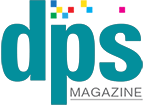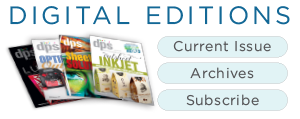3.8.18
Ricoh USA, Inc. has unveiled the latest enhancements to RICOH ProcessDirector designed to drive significant time and cost savings. ProcessDirector, a modular, scalable workflow-driven solution, now more intuitively and effectively helps print service providers connect with audiences. It also allows users to more quickly and accurately produce forms with variable data, avoiding the manual processes, costs and opportunity for error associated with creating, storing and managing pre-printed forms.
“At Ricoh, we pride ourselves in listening to our customers and assuring them that what they need, we deliver on,” said John Fulena, Vice President, Commercial & Industrial Printing Business Group, Ricoh, USA, Inc. “These ProcessDirector improvements are an exact example of that customer commitment. Customers told us they wanted to reduce manual processes, lower costs and eliminate frequent errors. We listened, and we have delivered.”
ProcessDirector software combines core capabilities with optional add-on features to allow flexible control of printed and multichannel output. It helps streamline operations, improve process integrity, enhance operator productivity, reduce errors, and lower costs. Among the features announced today is the rollout of an intuitive, visual user interface that provides a comprehensive view into job and device status with a quick glance. Additionally, inkjet customers can use the dashboard to track how much ink of each color is used per job, creating additional cost transparency and aiding resource management. These improvements build on ProcessDirector’s long-held goal of streamlining and simplifying communications management.
For years, forms have been commonly produced by pre-printing blank “shells” to be filled in later, as-needed. This approach required that the pre-printed forms be stored and then carefully loaded – either into paper trays or via paper rolls – to avoid poor registration and other errors before using the labor and resources required to print again, this time completing the form. In addition to such time-consuming processes, pre-printed forms have to be thrown out when they become obsolete, becoming even more of a cost burden. Pre-Printed Forms Replacement makes printing forms on plain paper quick and easy. It dynamically redefines AFP and PDF files on-the-fly, so content that would normally be pre-printed can instead be added directly to the data in the print file. This approach preserves forms’ uniformity while using variable data to dynamically fill them in as they print. With this feature, customers only print as many forms as they need, eliminating waste from unused forms.



